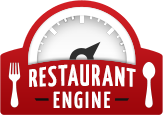Why Your Location Matters To Your Diners

Your success may be dependent on your location.
You know that your concept, your menu and the level of customer service you provide diners dictates your success.
But, did you know that where your restaurant is located concerns your customers as well?
All spaces aren’t created equal, and not all locations are right for your restaurant. In fact, it can be difficult to find the perfect spot.
In this article, we look at why your location matters to diners so you can work to find the best place.
Safety is Important
Most of your customers want to visit a restaurant where they feel safe getting out of their car or off the subway and walking to your restaurant.
Before purchasing a building or signing a lease, do a location analysis. Be sure the location of your restaurant is in a low crime area.
When designing your restaurant, pay attention to safety on the inside as well.
Your customers expect you’ll have taken care of the basics: fire alarms, sprinklers, ramps and handicap accessible doors.
Parking is Critical
Your customers don’t want to walk a long way to get to your restaurant. They want easy access and nearly curbside parking.
Don’t disappoint them in this area, because convenience is one of the reasons they’ll choose your restaurant over the competition.
If people have to drive to get to your restaurant, you want to make sure you have enough parking to accommodate them.
For restaurants that people don’t drive to but take the train, bus or subway, you also want to make sure you aren’t too far away.
While these folks are usually accustomed to walking, they most likely aren’t up for a half mile trek.
Bottom line – don’t pick a location where parking is a challenge for your customers.
Good service starts outside your restaurant doors, so start off on the right foot with easy parking. (tweet this)
The Room Inside Matters
Quaint restaurants are often sought-after dining establishments. But, there’s a fine line between quaint and small and crowded.
When choosing your location, ensure that your customers have enough elbow room that they can have a private conversation and eat in comfort.
Easy to Find is a Bonus
Your customers don’t want to go on a scavenger hunt to find your restaurant.
Pick a spot that is easy to find. You can choose a high traffic area for greater visibility, but don’t neglect the quaint hideaway as long as it’s easy to locate.
If choosing a location that’s tucked off the beaten path, make it easy on your customers by providing adequate signage so they can find you.
When it comes to new restaurants, visibility can make or break you. Take a look around and make sure there aren’t any barriers to finding your restaurant.
Now that we’ve looked at why your location matters to your diners, let’s look at a few more tips for picking the perfect location.

Meet your customers where they work and live.
Do Your Research
Don’t pick the first spot you see, even if it’s the “perfect” location. Step back and do your research.
Check out the neighboring competition, traffic flow and parking options.
Come back and visit your restaurant at different times of the day. You want to know what the area looks like morning, noon and evening.
Be patient with your search for the right location. Because it matters to your diners, and your success, spend time looking and researching the location.
The best spots are often locations that are in existing, strong neighborhoods.
The more visible your location, the better your shot at success. A highly visible location means more eyeballs see your restaurant and decide to give you a try.
Your location is actually one of your top marketing tools. Place it strategically, and your chances at success are good.
Check Traffic Rates
Before choosing a location, you want to research foot and vehicle traffic. Again, do this at various times throughout the day.
You also want to look at visibility from the highway and behind buildings. Take note of the sidewalk areas. Does the sidewalk make getting to your restaurant easy, or does it impede foot traffic?
Lastly, look at potential sign locations. Is there sufficient space to make sure the signs point to your location, and are they visible?
Target the Customer
Your target market is a huge consideration when choosing a location.
For example, if your target customer is families with children, your optimal location isn’t in the downtown business district.
Likewise, if you cater to young professionals, you don’t want to choose a location near neighborhoods brimming with families.
Another piece of research to do is a demographic study.
First, know who your target market is. Then, uncover the best locations in your city to meet the needs of that customer. Once you’ve done that, you can start looking at locations.
Demographic data to look at includes, but is not limited to, the following:
- Age
- Household make-up and size
- Income levels
- Education levels
- Marriage or single status
- Job
- Interests
- Population density
Knowing your target market’s demographics helps you meet their needs by providing a location that best suits them.
Look at Convenience
Finally, once you know your target audience, you can look at the nearness factor.
This means how far people are willing to drive to your restaurant. For most people, that isn’t very far.
With most people’s need for immediate gratification, you aren’t going to find they’re willing to drive for upwards of 30 minutes to get to your restaurant.
Spontaneity plays a role, and you want to make sure you are close enough to your target audience that they can get to you quickly.
Pick a location that is near to your target diners. Make sure that you are closer to them than your competitors are.
Final Thoughts
The old adage, “location, location, location,” applies to your restaurant. Your customers care where you are located.
The location of your restaurant affects your customer flow and ultimately your profitability. (tweet this)
When looking for a place for your restaurant, put your customer front of mind. Ask yourself if they’d be happy dining in your chosen location.
Then, take it a step further and ask yourself if your location caters to your target market. If not, choose another spot.
If yes, then you’ve found the perfect spot to place your restaurant.
Finally, do your research and understand what works in your chosen location. Location has an enormous impact on whether your restaurant continues into the future.
Do you have a great website that highlights your restaurant location? Is it user-friendly and enticing to your website visitors? If not, or you’d like a website tune-up and refresh, contact us for your free website consultation. We’ll make sure your website works for your site visitors and is the centerpiece of your marketing.
Images: Nick Hillier and Roman Bozfko


Leave a Reply